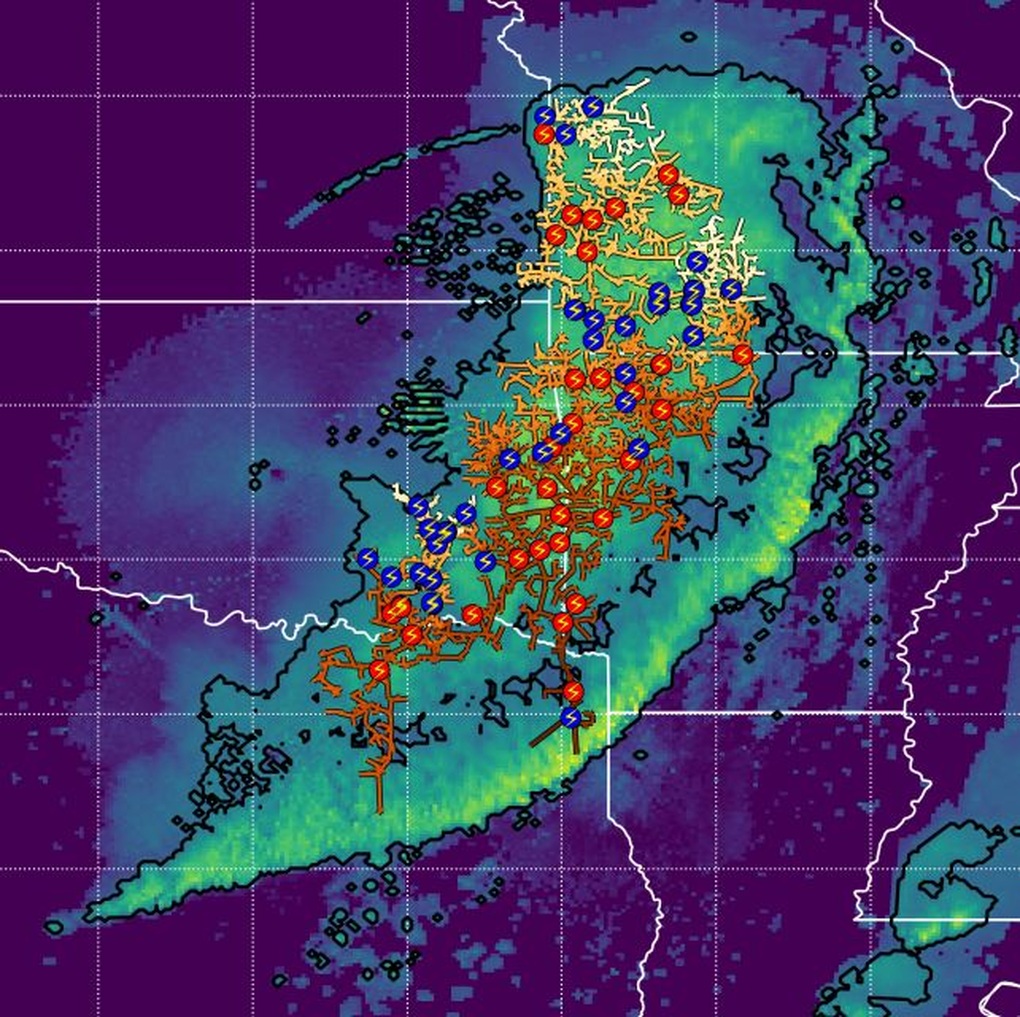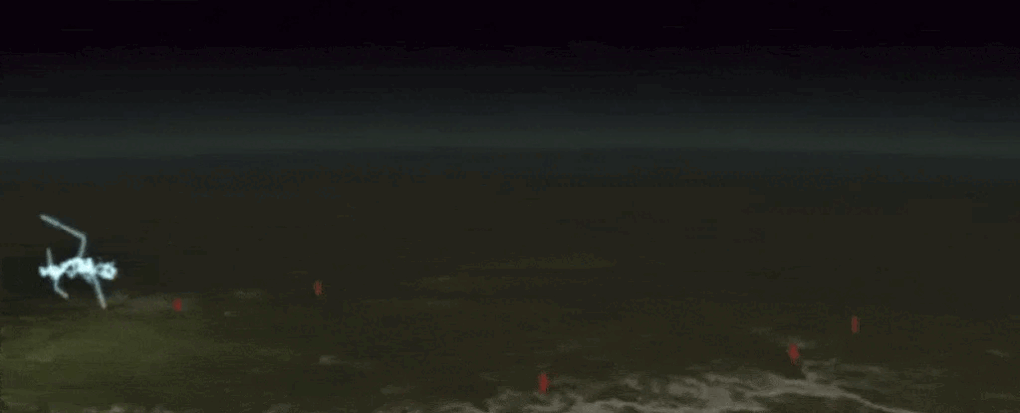A lightning bolt with a record length of 829 km, spanning the sky from Texas to Kansas (USA) in 2017, has been officially recorded as the longest lightning bolt ever seen in the history of meteorological observations.
The information was published in a report in the Bulletin of the American Meteorological Society on July 31.

Lightning traveled almost through the entire large cloud from Texas to Kansas, USA (Photo: GTRI).
The record-breaking lightning strike was detected by the US National Oceanic and Atmospheric Administration (NOAA) GOES-16 satellite system. The satellite, launched in late 2016, is equipped with a geostationary lightning mapper (GLM) capable of continuously monitoring the sky and recording lightning phenomena with high accuracy.
Initial data on the massive thunderstorm that contained this lightning strike was recorded from the moment it occurred. However, it wasn't until a team led by Georgia Institute of Technology atmospheric scientist Michael Peterson reviewed the data that the massive electrical discharge was confirmed to be a single lightning strike of record length.
The previous record, set in 2020, recorded a 768-km lightning bolt that traveled across the states of Texas, Louisiana and Mississippi.
According to meteorologist Randy Cerveny, representative of the World Meteorological Organization and Arizona State University, this is one of the rare cases of "extremely powerful lightning" and there are still many undiscovered mysteries related to this phenomenon.
Typically, lightning forms when electrically charged particles in the atmosphere collide and accumulate so much charge that they are released, creating a surge of millions of volts.
In most cases, lightning is no more than 10 miles long and travels vertically from cloud to ground. However, some special lightning can travel horizontally between clouds.

Lightning recorded by the GOES-16 satellite (Photo: Science Alert).
When the cloud is large enough, this phenomenon can produce giant lightning bolts. By current standards, any lightning bolt that is longer than 100 km is classified as a "super lightning".
Measuring and identifying a powerful lightning strike is a job that requires a high degree of precision. Scientists need to coordinate data from satellites and ground sensors to recreate the phenomenon in 3D space.
This method clearly identifies the lightning as a single electric current and allows for an accurate measurement of its length. Since lightning is often partially obscured by clouds, such extreme events can be missed without modern observation technology.
It is no coincidence that both of these powerful lightning events occurred in the Great Plains (a vast area of plains in North America, located west of the Mississippi River and east of the Rocky Mountains, largely covered by grasslands, prairies, and prairies).
This is a "hot spot" area for medium-sized thunderstorms. The unique climate conditions here have created an ideal environment for super lightning to form. Researchers say that if this record is broken in the future, it will most likely appear in the same area.
Source: https://dantri.com.vn/khoa-hoc/tia-set-dai-829-km-20250801073819978.htm





![[Photo] Unique architecture of the deepest metro station in France](https://vphoto.vietnam.vn/thumb/1200x675/vietnam/resource/IMAGE/2025/11/14/1763107592365_ga-sau-nhat-nuoc-phap-duy-1-6403-jpg.webp)































![[Photo] Unique art of painting Tuong masks](https://vphoto.vietnam.vn/thumb/1200x675/vietnam/resource/IMAGE/2025/11/14/1763094089301_ndo_br_1-jpg.webp)
![[Photo] Special class in Tra Linh](https://vphoto.vietnam.vn/thumb/1200x675/vietnam/resource/IMAGE/2025/11/14/1763078485441_ndo_br_lop-hoc-7-jpg.webp)







































































Comment (0)